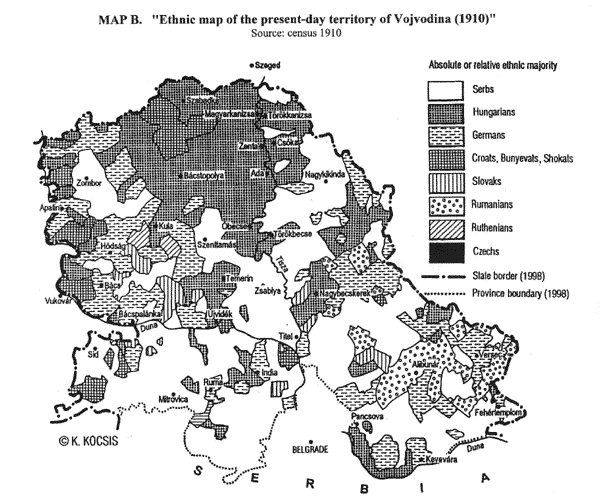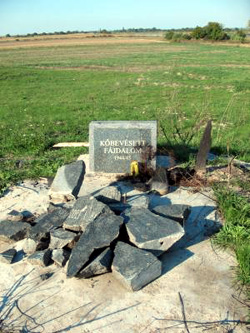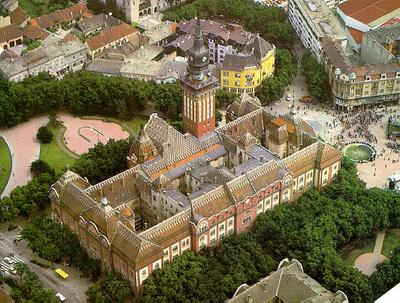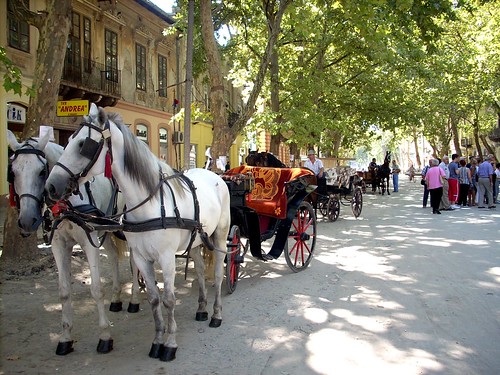[disL] Vojvodina Hungarians + Interview with lOnestar1980 - ENGLISH VERSION
 •
by
•
by disLex
[DE] Die deutsche Version findest du wenn du auf diesen Link klickst.
 [EN]
[EN]Meet the Vojvodina Hungarians!
+Interview with lOnestar1980
Hello!
We reached the third part of the documentary, I chose a very persistent community to that weekend, who were divided by many troubles in the last decades, they are still there in considerable number after all, enriching the word ‘Hungarian’ with their culture, persistance and with their typical slow southern accent. I really came to like them, personally i was also renriched with serious life-experiences by their fate. There is a Vojvodinean boy (because it will be about them today), two classes under me and as much I have a chat with him, I feel that always if I were two years younger than he, maybe because he has already visited many levels in the school of life. Let me present you one of my personal favourites, the inhabitants of Syrmia, Banat and Backa: the Vojvodina Hungarians.
As we arrive at the coat of arms heading, I have to tell you that these article wont be only about Vojvodina, will try to write about all the Hungarians living in the place of the former Hungarian Kingdom, which is given to Yugoslavia - the Hungarians call it ‘Délvidék’ which means ‘Southern landscape’ in Hungarian, which means the Drava triangle in Croatia and the Murland Slovenia and Croatia. However, I couldnt find the official coat of arms of the ‘Southern’ Hungarians so i show you the coat of arms of Vojvodina:

The coat of arms unites the three constituents coats;
-Above on the left side we can see the coat of arms of Backa/Bácska with Paul apostle, with the usual symbols of the local cities such as the sword and the old-testament, showing that the region became catholic again after the Turkish rule.
-On the right side above, we can see Banat/Bánát, which is divided to three parts today, with its coat of arms with the lion, symbolizing the valour of the southern border defender shires.
-And below there is the coat of arms of Syrmia/Szerémség, including the panhandle which is environed by the Danube, Tisza and the Sava on south, (white colours) the deer means the population, which was always ready to the defence against the Turkish.
[img]http://upload.wikimedia.org/wikipedia/commons/6/6b/Flag_of_Vojvodina.svg[/img][img][/img]The flag of Vojvodina Authonom Region, also with the three constituent landscapes, of course a little bit updated with the Serbian national colours and with a little EU style
😉
Their homeland

Attention, you will get surprising news! The residency of the Vojvodina Hungarians is Vojvodina. That region means the former part of Great Hungary which now belongs to Serbia. On the South the Sava and the there really wide Danube borders it, on the north there is the Hungarian border, on the east Romania takes it out from the other parts of Banat, meanwhile on west the almost fresh Croatian border is the ending point mostly among the Danube.

The region is directly connected to the Hungarian Great Plain, (actually it can be counted to it) and its not just a simple soil, according to one research, the third best soil on the Earth can be found here, (after the Mississippi valley and the Ukrainian Black Earth) so its no wonder, that it was the larder of Yugoslavia. The 90% of the terrority is flat, only one mountain can be found in Syrmia, the Fruska Gora (in Hungarian: Tarcal), which is a national park and very popular target of the trips, that can be proved with that, for example the Serbian players usually come there together to their eRepublik meetings. I have to mention the three important rivers of the region; the Danube, which comes from the left side, composes the border between Backa(1) and Croatia on the west, and with Syrmia(3) on the south. The almost exactly uprigt flowing Tisza detaches Backa and Banat(2), then at Titel, it empties in the Danube. The third big river is the Sava, which flows on the southern border of Syrmia and at Belgrade - so at the Serbian capital - joins to the Danube. The Ferenc-canal (or great Backa canal) makes connection between the Danube and the Tisza through the middle of Backa. The biggest - and the capital city of the authonom region is Újvidék (Novi Sad) or Neusatz in German, with 215.000 inhabitants, its the second biggest city of Serbia, after that comes the cultural centre of the Hungarians, Szabadka/Subotica (100.000), the third is Nagybecskerek/Zrenjanin (80.000) and the Tisza-coastal triple Ada (20k), Zenta (20k) and Magyarkanizsa (30) are also important for their strong Hungarian majority. Vojvodina is long well-known for its many minorities, 25 other ethnic groups are there between the present ⅔ Serbians, there are six official languages, the most decisives are the Serbian and the Hungarian. The Hungarians live in a big block in the northern part of Backa and Banat and in great sparse we can find (clear) Hungarian villages on the southern parts too.

About that how could envolve that interesting linguistic cavalcade, we can get the answer from:
Their history

Like the Subcarpathian Hungarians, so they werent handled as anothers untill 1919, so their history is the same with the motherland Hungarians - with some smaller or bigger differences.
The seven tribes cane here (895-900), they settled down in the Carpathian-basin, in that time in Slavonia and Syrmia too, so in every farmable lands. Its important for me to mention that when the Hungarians came in, there was already an avar-slavian mixed population with ~300.000 people, who made tribe-alliance with the Hungarians (who were according to the best guesses around 200.000) and because the language or the ‘nationality’ almost wasnt that decisive at all, they assimilated in the Hungarianity, there were left only some along the border.
In 1090, (Saint) Ladislaus, the 1st successfully got the Croatian throne, the 800 years-long personalunion between Croatia and Hungary started in that time. Thanks to that, the Croatians could move over and over from the coast, first untill the Sava, then untill the Drava and for a time the Hungarians lived mixed in Slavonia, just like in Syrmia. As the result of the the Turkish conquests on the Balkan, more and more people moved to the southern border terrority of Hungary to avoid the Turkish raids and it wasnt problem at all, because the lands had to be farmed and the word ‘gentilitial issue’ didnt exist then yet. According to the great part of the Historicans, in the time of King Matthias Corvin, (the righteous) the 80% of the Hungarian Kingdom had Hungarian nationality, the 20% consisted of the native slavs (mostly along the borders) and since the 1200s the Vlachs (later = Romanians) who were settled down in very little groups. The fact, that other nations also were in the country, wasnt interesting at all, it was totally natural, because in the tume of governor John Hunyadi, half Bosnia and the norhest part of Serbia was attached to Hungary, in order to build up one modern fortress-system and defend more effective against the muslim conquestors.

The terrorities under the rule of the Hungarian king in 1490, with blue the regions conquested by Matthias (Corvin/Hunyadi)
However, after that only black days came to the Vojvodineans, because the Osman Turkish Empire began to attack harder and persistent the southern strongholds, and after many threatening signs, in 1526, they could totally defeat the Hungarian royal army, with the death of the Hungarian king the Habsburg caught the land, who used it only as a buffer-country between Vienna and Istanbul. It cant be expressed, how big damage meant that permanent wartime to the Hungarianity. Imagine it, as the greatest army of these times, trails along the Danube in every second year, usually with 150-200.000 very hungry soldiers, untill Buda(pest), or further, and then back again. By the rares which accompanied with the 15 years war and other wars, the serious majority of the local population was scuppered down, were kidnapped or escaped far if it could.

Hungary in three parts (1541-1686). The Habsburg Royal Hungary on left, the Turkish occupied zone in the centre and the Transylvanian Principaty on the right.
Untill 1686, when the Habsburgs ‘liberated’ the country, the 90% of the long-ago rich terrority was uninhabited, its population could race with Siberia in number. One of the greatest victory over the Turkish was also here, in the battle of Zombor (Sombor) the whole Tuskish army was pushed in the Tisza, messaging that it is christian land, and will stay that too. After that started the mass-immigration, with the little fact, that officially untill 1780 a single Hungarian wasnt allowed to put his foot on the former Turkish occupied sector. The settlers came in masses from the southern Serbian principaty and from the other places of the Hungarian Kingdom, with the dream of a better world, which they usually found, because not many people went further, and according to the dates, no one went back. So could come the Slovakians, Ruthenians from Northern Hungary, and in practise every single nation which could found in the Habsburg Empire, even some French and Spanish settlers came to some places of Banat.
However, the most decisive were the Serbians, Hungarians and the Danube Swabians, that triple gave the ~90% of the population in almost equal rate. The story became embarassing in 1848, because the Serbians in the hope of some privileges, started a resistance war against the already freedom fighting Hungarians, and the Swabians turned into parties, some of them supported the revolution, some of them didnt. In practise there was a civil-war between the Vojvodean Serbians and the Hungarians supported by their army. Finally of course the Hungarians suffered more as it is usual. (In that article i would commemorate about John Damjanich revolution party general, who though was Serbian, supported the Hungarian freedom war, and was executed in 1849 with the other Hungarian generals, as the boss of one of the most heroic units, the red cappers.)
After the revolution, the triple-speaking was typical in that region, which still didnt ended in 1920, when Vojvodina, the Drava triangle and Murland was attached to the Serb-Croat-Slovenian Kingdom, which soon became Yugoslavia.

The ethnic rate of Vojvodina in 1910
To the Hungarians and Germans it was a very tragic decision, because they found themselves in a panslavic gala-feast, where not just werent served any eating equipment them, but they were the main course. The big turn happened in 1941, Backa was atteched to Hungary, Syrmia to Croatia and Banat went under the administration of the German military units. With that decision Hungary became the ally of the Third Empire, which was unacceptable for the other side, it crossed the Yugoslavian-Hungarian permanent friendship treaty, finding a mass of enemies to itself. The partisan activity became constand not only in Backa, but in Syrmia and Banat too, where the most cruel methods were used against the population to stop the battles. Unfortunately in these bloody reprisals not only the Germans and not only the Croats did felonies.
After that happened the ‘44s nightmare, in which first part the Serbian population was decimated, then in the winter came the blood-revenge, when the price of the present 3 years was paid tenfold by the blameless Hungarian and Swabian population. The ‘southern massacre’ claimed at least 40.000 blameless people in great majority Hungarians and Swabians who were executed by middle-age ways, not only in Vojvodina but in the Drava triangle and Murland, too.

The memorials of the partisan blood-revenge unfortunately have to be built up again and again
After that the triple-language fell down, and though the next station was slow and and Vojvodina became authonom (dont think about the South-Tyrol way) the Hungarianity lived still in soft dictature, fortunately the Hungarians didnt remove in that number as the other two dozens of nationalities living there. (The Swabians rate was 30% in 1910, now they dont reach the 0.2
😵
The thing which caused the real and enormous problem, was the Yugoslavian war, where the Hungarians and other minorities were sent on the front not as soldiers but as front-charge workers in the bloody battles, to dig trenches in the first line for example. With the collapse of Yugoslavia, Vovjodina lost its relative good status, and became one of the poorest regions. After these happenings started the mass emigration to Hungary, and since that I can speak with a Vojvodinean guy in my gymnasium
🙂The Vojvodina Hungarians are still the second biggest population after the Serbs (in whole Serbia too), with its considerable almost 300.000 people they are as many as all the other minorities together, and though as every such community, they also reduce, if we keep an eye on them, that typical southern Hungarian accent will be there for a long time in Vojvodina.
🙂
Interview

This time I made an interview with a player, who likely used to being southern Hungarian very well, because he didnt change this thing even in eRepublik, he lives now on the southest Hungarian colony, in South Africa, so let me introduce you lOnestar1980, the Minister of Immigration in South-Hungary!
🙂
Hi, my first question is what makes you a Vojvodinan Hungarian?
🙂
Hello. Mainly its because of Trianon, that I’m Southerner Hungarian. My ancestors are were split here, i was born here, i visited the school here, i live here...
When did you start to play and as the effect of what? How much did your impression change about this game since the beginnings?
I registered last year on the 15th of November, after the urging of one of my girlfriends. It changed much. At the beginning of the year i found the game quite boring but with time as I got know more about it, i began to like it more and more.
As Vojvodinean you might know many Serbian players too. How much do you know their present standing/ambitions?
Yes. In the old times Im used to visit the serbian chat and I also wanted to join in the White Eagles independent army but it is later cancelled. Unfortunately in these days they are (Serbians) also caught by the game-leaving fever. They are also optimized on sparing and they are trying to make a babyboom. However as they fulfilled their main goal, the deleting of Croatia, so they cant really reach any serious boom.
I’ve seen you first on the South-African chatroom. Could you involve the readers about what is happening there? What are your goals, how is the life there?
Since July, Im the member of the South African TO team. Since August we took over the whole authority in the country. Our goal is dual. Our first aim is to provide the cheap titanium to the PHX member states, the second is to make a second home to the Hungarian players. The ones, who got enough from the inner political scandals, can calmly come to us.
If you see it realistic, what do you thing how long can one TO (political takeover) be kept in life?
Well hopefully we can keep it alive very long yet. I think that as long as there wont be any serious babyboom (or fakeboom) we can keep it alive.
Who are the biggest enemies and friends of South Africa/South Hungary? Had you got any conflict with other countries? Would you maybe like to expand, if yes then where?
At the moment our biggest enemies are the ancient inhabitants, American and (A)TOers from another EDEN countries. Around 2-3 months ago we had a likely serious conflict with Brazil, when we let our American MPP to run out. They capitalized that and occupied Northern Cape from us immediately. Since that we arent in friendly connection with them. Our greatest friend is Hungary, they supported us in everything so far. We had plans about getting a High Grain region in South America but nothing happened because of Brazil.
Whats your favourite paramilitary unit and what do you like in them? How should be a good-working? If you had 500 Golds to support an army whom would you give it?
I cant really answer anything on that question seeing that I havent been member of any regular army so far, so I dont know too much about them. If I had 500 Golds, I’d give it likely to some active independent army. They need every single Golds because they dont really get any support from the state. They have to get every single Gold from their members.
The number show that these game is very popular around you. Did you ever show the eRepublik to your friends? Whether part did/would you show? Why does it still waste to play that game?
Yes it became very popular among the Serbs, thanks to one 10 minute long interview with the actual Serbian president in the Belgrade civil service TV. There was time, when I recommended some of my friends to come and join the community. I showed them mostly the economical and military module. I think that this game wastes to play only because of the community and friends. Unfortunately I have to say that if there wouldnt be that good community in the South-African TO, I’d have been also likely left.
We arrived to the end of that little interview, thank you for that you for that you dignified my paper. The right of the last word is of course hold to you.
🙂
I also thank you that you requested me to that interview. On the right of the last word I’d just message the readers that if anyone got enough from the political war in eHungary then come brave to Africa. Here there is calm and solidarity. We can also give out citizenships in limited number. So come as many as you can!
🙂
* * *
Well, if you could read so much text, then its time to refresh your mind with the:
Gallery


One of the nicest buildings in Szabadka/Subotica: the town hall - in day...

…and night

One thing, which nowadays still can be found there: the Kutsche (Hintó - Fijaker)

The thing which you can find worldwide and which is cool: Sunflowerfieeeld
🙂

Pétervárad/Petrovadadin. The second biggest festival of Europe - The EXIT is also here in every summer.

The Mur flews in the Drava. Slovenian-Hungarian-Croatian trialborder

One nice world-ranked Vojvodina soilpart
😉

One Deer from the Dravatriangle

Nagybecskerek - Großbetschkerek - Zrenjanin

Syrmia, Backa and Banat in one picture. The epmtiing of the Danube and the Tisza

Still the Danube

The catholic cathedral of Újvidék/Neusatz/Novi Sad

As farewell, a pair, dancing csárdás in Székelykeve/Skorenwatz/Skorenvac. One village from Banat, around the middle of Serbia, where the rate of the Hungarians is INCREASING
Thank you for your time and attention,
I hope you keep doing that good thing!
disL
🙂


Comments
Everybody knows: hungarians came to Europe from mongolian Asia ! Stop spreading lies and misinformations !
Matthias Corvin his name was Matei Corvin and he was an Romanian . so shut up with your lies .
The greatest Hungarian king was an Romanian .
Very beautiful countries, I have to say. I do agree that the Hungarians held all those provinces in the, let's say 1000-1918 period, but what about before that? Where were the hungarians when the Roman Empire was around? When Traian attacked Sarmisegetusa (near today's Deva, a transylvanian-romanian town) in 104-105 AD, I did not hear about any hungarians fighting to defend the citadel. Nor did I hear anything about the hungarians when the Thracian King Burebista was roaming aroud from the Black Sea to what is today's Austria or even Germany in around 82 BC. When Cezar and Pompei were fighting for power in the Balcans, I did not hear about a hungarian mission to help one of them, but I did hear of a thracian one, Burebista sent Acronion as a degeate to help Pompei. Oh, and in case you are wandering, the thracians (who we romanians consider as our ancestors along with the romans) were first mentioned in the Iliad, and in Greek mythology, Thrax (by his name simply the quintessential Thracian) was regarded as one of the reputed sons of the god Ares. In the Alcestis, Euripides mentions that one of the names of Ares himself was Thrax since he was regarded as the patron of Thrace (his golden or gilded shield was kept in his temple at Bistonia in Thrace). I don't remember anything in Greek mythology about the hungarians. Just couse you held a piece of land in the last 900 years does not mean that you should negate the previous owners, who held it for much, much longer than you.
A kis lábszőrmókusok, hogy beindultak
Frusztrált, komplexusokkal teli brigád.
Bravo!
Other.
If a romanian is speaking about dacian and thracian "fathers", this is the same, when a hungarian is speaking about the huns and scythians. Endless story.
Before the 19th century nobody cared about the mother language, doesn't existed the wor😛 nationality.
If vojvodina is Hungarian Land than Souther great plain is Serbian land...In this article we have a lot of stuf written nothing eworthy to read ...
half of serbia ns hungaria is ROMANIAN!
this article is lolsome 🙂
good article.
@Igor Milosevic Peric: serbs coming into Vojvodina after turkish destroy Hungarian Kingdom. One of the greatest serbian settler group coming with patriarka Cernovic.
I guess, Vojvodina is Hungary !!!
Guys i wrote it not to spread the hate but to write a little about the history, and whatever u do, vojvodina was part of Hungary for 1000 years. I cant do anything with it. The other thing that i dont understand why the Romanians are so interested in my articles, btw i didnt write anything about the nationality of corvinus matthias. According to the historicans, he was really 1/4 'Romanian' but 1/4 doesnt mean that he was Romanian. His dad, John, never wrote down that he's 1/2 "Romanian" - I mean Vlach, because that word 'Romanian' didnt exist then, it was invented later - because John didnt think that it was so important thing. I am 1/4 Szekler for example. I could write here whatever you want, you wouldnt agree.
And why I dont write about the Hungarian before? Because this article is about the Vojvodina Hungarians. When I'll write about the Moldova Csangos, then its possible that i'll catch the other part of the stories too.
Btw. I am still waiting to the comments, which show me whether part of my article included any lie. Please show it.
People grow up!
Show that you are human and not some nationalistic fashists hating others just for their religion/ethnic/...
History is history, begin making a good future
*facepalm* no wonder that our world is going into shit.
Hail humanity, larga vida a la razón, pour la paix, zivelo bratstvo i jedinstvo 😛
Reported for spam.
According to http://wiki.erepublik.com/index.php/Rules_Addendum "posting articles or topics of real world events not directly related to eRepublik is considered SPAM"...
Yes, thats why i put the eRep interview in it 🙂
So what,my ancestors were from Vojvodina and I am German.Hungarians and Germans did awful things in Vojvodina during WWI and WWII,offcourse serbs wanted to revenge...